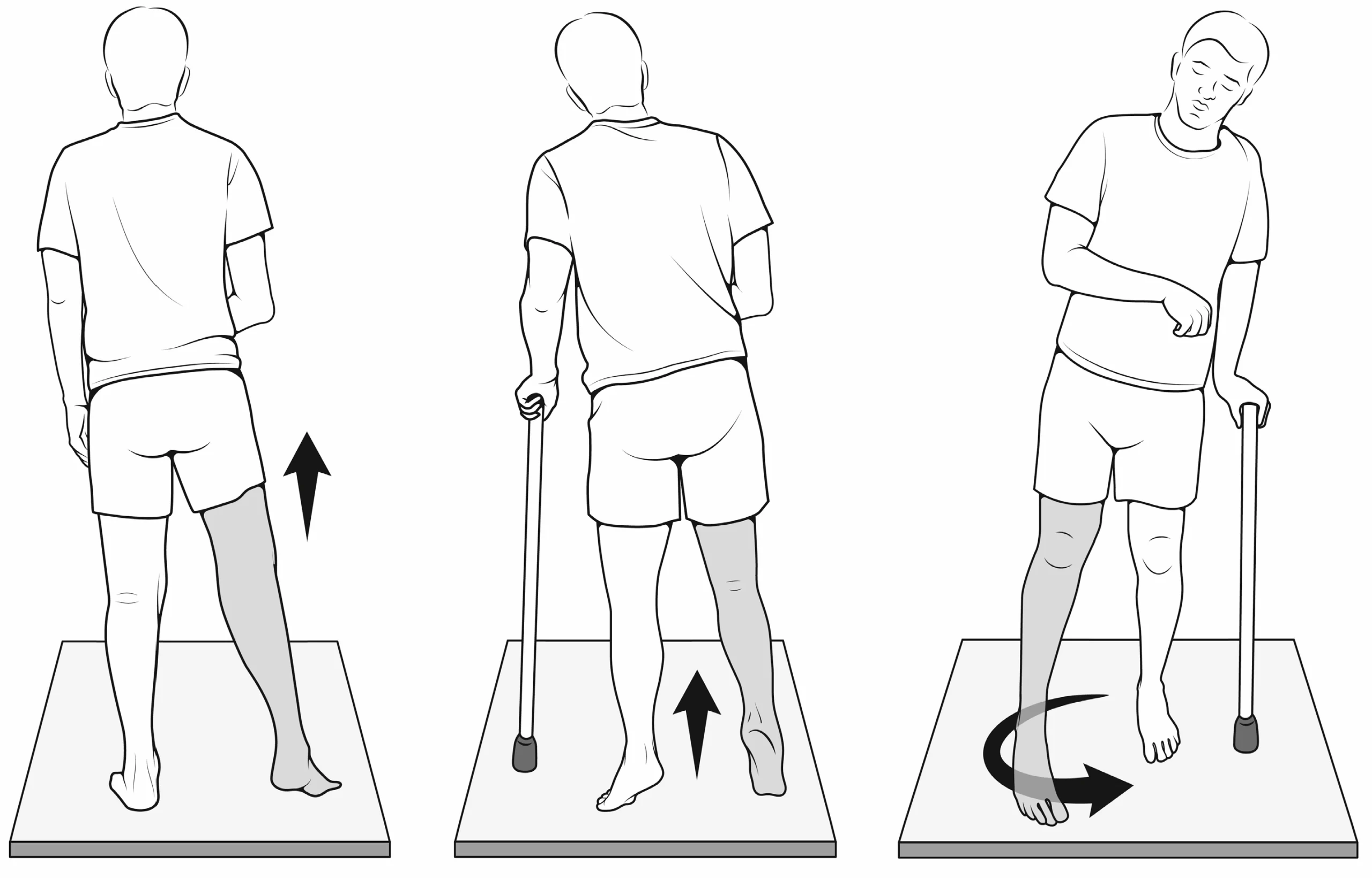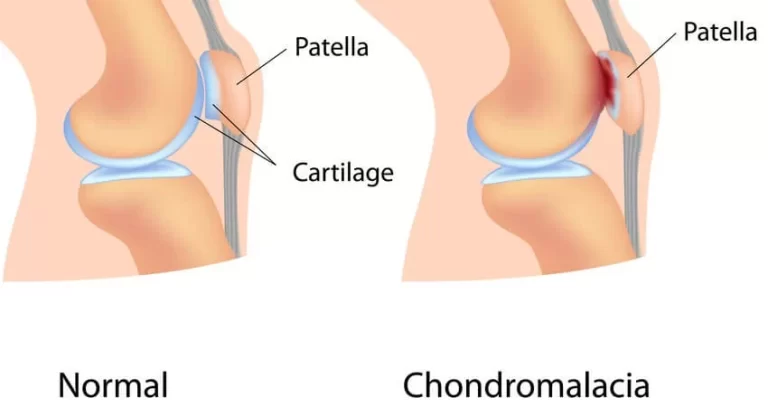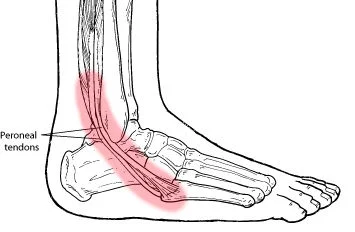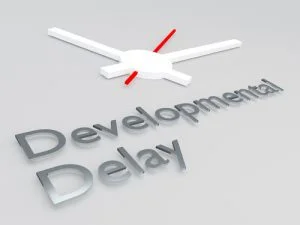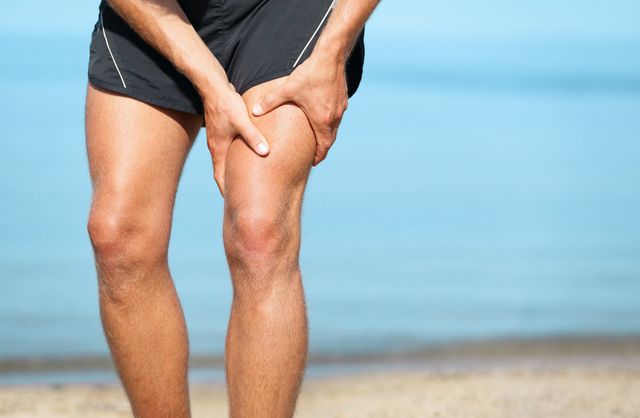Hemiplegic Gait
Table of Contents
What is a Hemiplegic Gait?
Hemiplegic gait is a type of abnormal walking pattern that can occur due to weakness or paralysis on one side of the body, usually as a result of a neurological condition such as a stroke, traumatic brain injury, or cerebral palsy.
In a hemiplegic gait, the affected person may lean to one side as they walk, with the leg on the weaker side being dragged along or swung around to compensate for the lack of strength. This can cause an uneven and unstable gait, making it difficult to walk without assistance.
Other common features of a hemiplegic gait may include a shortened stride length, reduced arm swing on the affected side, and increased time spent in double support (when both feet are on the ground) during the walking cycle.
Treatment for a hemiplegic gait may include physical therapy to improve strength and coordination, as well as the use of assistive devices such as canes, walkers, or braces to help support the affected side of the body and improve balance and stability during walking.
The functional limitations and impairments after a stroke are different for each individual and many times they include impairments in mobility. Gait recovery is a main motive in the rehabilitation program for persons who suffer from stroke, and frequently it is a person’s major goal. Reinstall function after an attacking stroke is a difficult process that involves spontaneous recovery and it also has an impact on therapeutic interventions. However the majority of persons with a stroke regain their ability to walk, but many do not achieve the mobility endurance, speed, or security that is required for performance in their daily activities independently and safely.
The following clinical characteristics could indicate a hemiplegic gait:
- spasticity in the clasp-knife region and increased tone
- With or without clonus, hyperreflexia
- advancing planters (i.e. positive Babinski)
- decreased power
- Sensory deficit: The location of the nerve system’s lesion determines the nature of sensory loss.
Gait Training
Therapeutic Interventions
The stroke rehabilitation program is highly dependent on a person with a stroke’s needs. A physiotherapy treatment plan of care can contain any or all of the following interventions to improve mobility :
- Prevention of adaptive changes in lower limb soft tissues
- Bring out voluntary activation in key muscle groups in lower limbs
- Improve muscle strength and coordination
- Improving walking velocity and endurance
- Maximizing skills, such as elevating your flexibility
- Improving static and dynamic balance
- Improving cardiovascular fitness
- Improving safety awareness
- Guidance on the correct use of assistive devices
Conventional Gait Training
Conventional gait training is known as over-ground gait training. which include the breakdown of parts of the normal gait cycle, training and correcting the abnormal parts, then putting back them into ambulation for returning to the normal gait cycle. This can evolve the following:
Weight shifting between both legs
Stepping training which includes swinging or clearance over even and uneven surfaces
One-leg stands with steady balance and control.
Gait Training Exercises To Improve Your Walking Ability
When a person has suffered from a stroke, their potential to walk may be affected. This is possible because the brain has had difficulty communicating with the body, resulting in weakness, imbalance, or a lack of coordination that affects gait.
Some goals for gait training involve the following:
- Strength training of lower limbs
- Increasing balance and coordination of all muscles and joints
- Walking on different surfaces
- Walk in parallel bars
- Walk on treadmill
- Walking with an assistive device
Gait Training Exercises which You Can Practice at Home
The main goal of gait training focuses lower limb, but that’s not all. Walking is a full-body activity that requires coordination from your feet, trunk, and also your arms.
All of these muscle groups are targeted in the gait training exercises, which help you walk with better balance and coordination.
Seated Marching
This basic gait training exercise can be started from any seating position .then raise the injured leg to your chest, then lower it back to the ground. Then do it again on the other leg, alternating forward and backward. Do around 20 to 25 repetitions.
Keep in your mind that your back should straight and maintaining controlled motion. After some days, you can add a few seconds of pause at the top. You can also add arm swings like you’re walking on the ground while sitting on a chair
Flamingo Stands
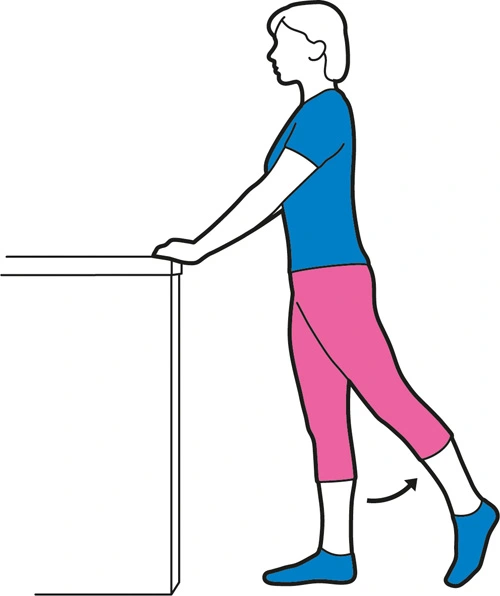
With this gait training, the user should practice standing on one leg for around 30 seconds before switching to the other foot.
If someone wants to walk normally, they should challenge the possibility of feeling a little bit of shaking. However, they should make sure they are in a safe area with a bed or wall directly behind them in case they lose their balance. For security and stability, grab onto a chair or a table.
When you are ready for this challenge, evaluate yourself from using two-hand support to one hand, then to fingertips until you can grip your balance without supporting anything.
Knee Extension
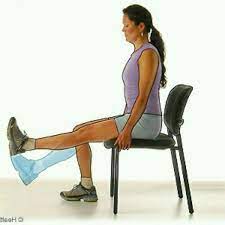
Knee extension
it is a very important part of gait training because it helps in strengthening quadriceps muscles and better leg mobility.
To do knee extension we should start from a seating position. Extend one leg, in front of you parallel to the ground, ensuring that you are contracting your thigh muscles on the top. After that, slowly put your foot back down to the floor. Alternate backward and forward movements between the right and left leg while maintaining your posture correctly. Repeat this movement for 10 repetitions.
Side Leg Raises
You should start in a standing position for the side Leg Raises exercise. Next, extend your leg out to the side by roughly 45 degrees. Place your foot back down after holding this position for a short while. The most important thing is to maintain core stability and avoid slouching. Your leg should be the only thing moving at all. 15 times on one leg, then the other legs, repeat this.
Knee to Chest

Knee to chest stretch
You should start with a lying position and move one knee toward your chest. Hold for three to five seconds, then alternate legs. Keep in mind that this exercise should not involve your leg muscles. To perform this movement effectively, focus on strengthening your core.
Ankle Dorsiflexion
This gait training practice will help alleviate issues like foot drop after a stroke by focusing on your feet. Start by sitting down and crossing the affected leg over the other leg. Then, using your unaffected hand, raise your foot towards your knee to place it in dorsiflexion. Next, extend your foot back down into plantar flexion
Do these exercises without using your hands for more difficulty. By doing so, this activity would become active rather than passive. Strive for 20 repetitions overall.
This gait training practice will help alleviate issues like foot drop after a stroke by focusing on your feet. Starting from a seated position, cross your legs to begin.
FAQ
One side of the body losing strength is known as hemiparesis. Hemiparesis can cause a person to be unable to move one side of their arm or to experience tingling or other strange feelings on that side only. One side of the body is paralyzed in hemiplegia.

